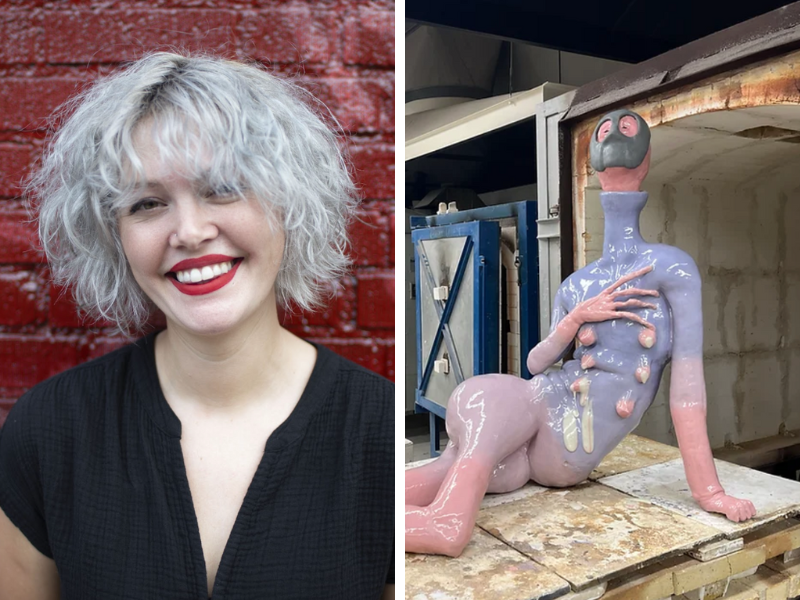
Amber Rane Sibley, an MFA student at Tulane University, uses ceramics as a medium to showcase various power dynamics in relationships.
Sibley’s work has been featured in galleries such as Fierman and First Street Gallery and media outlets such as the New York Times and Ceramics Now. Her upcoming exhibition, “You Don’t Say,” will be hosted at Tulane’s Carroll Gallery from March 4 to 12, with a reception on March 7 from 6-8 p.m.
"I believe it is really important to showcase the impactful work of students like Amber, who courageously explore themes of gender through their art,” said Newcomb Institute Executive Director Anita Raj, who first discovered Sibley’s work at the Newcomb Art Department Holiday Sale. “By connecting our rich history of Newcomb art with the vibrant creations of today's students, we not only honor the legacy of Tulane’s former women’s college but foster a deeper connection with current students at Tulane. I encourage everyone to visit Amber’s exhibit in March.”
Newcomb College, founded by Josephine Louise Newcomb in 1886, was the first women’s coordinate college within a United States university. The college created Newcomb Pottery for young women to learn a practical yet domestic skill during the post-war years.
“The point of Newcomb Pottery was to provide opportunities for women in the arts,” said Sierra Polisar, the Head of Collections at the Newcomb Art Museum. “We've taken that legacy and expanded it from strictly women to underrepresented artists in general. Now we focus mainly on contemporary art because the goal of Newcomb Pottery was to support working artists, so we have to support people who are making art today.”
Sibley grew up in both Southern Vermont and the Cape and Islands, MA, two places that still heavily influence her work today. She attributes a lot of her creativity to her mother. “She would do things with whatever she had to try to bring creativity into the house. I remember coming off the school bus and walking up the drive, and she had built this giant snow dragon,” Sibley said.
For over 10 years, Sibley built props and puppets for shows such as Blue Man Group and NBC’s The Sunny Side Up Show. After a professor encouraged Sibley to make a ceramic puppet, ceramic masks became a prominent theme in her work. “When I did it, I had so much fun doing it. It felt right. I was just doing what came naturally,” Sibley shared.
Her most recent sculpture, “Milk’er Dry,” a continuation of her “Help Yourself” series, explores the parallels between the female body and domestic labor.
“The female form, even in the way that it functions, is for the benefit of another. Even if you don't have a female body, you still can relate to the symbolism of what it means to be living and giving for other people,” Sibley said.
Her recent work has been fueled by feelings of frustration and other intense emotions. “I usually will have this strong feeling, and I will personify it, and then I'll go start making something. As I'm sculpting, it will take form because I'm really sitting in that feeling,” Sibley explained.
She hopes that viewers will be able to use her art as a mechanism for reflection. “My hope is that someone would look inwards at themselves. If they find something that they don't like, then they can come at it from a place of empathy, realizing that no one is purely a victim and no one is purely a villain,” Sibley said.
The level of heat that Sibley fires her sculptures at often causes warping. She throws away nearly half of her ceramic sculptures. “You have to relinquish control, and I think that’s why I like ceramics so much,” she said and added, “You can't move with the medium unless you do it together. If you try to control it, you're not going to get anything. I've found a lot of peace in those moments.”
Over time, Sibley noticed that she often found herself making art for other people. This realization had a profound impact on her art. “There's something really different about making something for yourself and from yourself entirely.”

